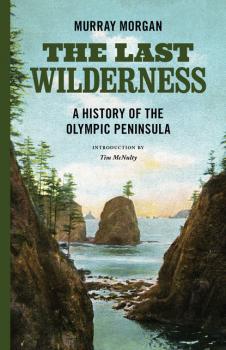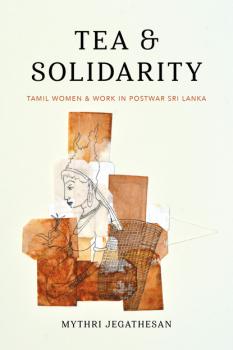MREADZ.COM - много разных книг на любой вкус
Скачивание или чтение онлайн электронных книг.Holy Science
In the early 2000s, as India was emerging as a global superpower, a key development project off the southern Indian coast was thwarted by intense opposition. The construction of a new shipping canal angered Hindu nationalists who sought to protect what they saw as the land bridge built by Hanuman and his monkey army in the Indian epic Ramayana . Environmentalists also protested against the canal, claiming that it severely threatened a fragile and globally important ecosystem. As the controversy grew, the religious and environmental arguments converged, reflecting the evolving relationship between science and religion that marks the hypernationalism of the contemporary Hindu right.Through this case study and others, Banu Subramaniam demonstrates the limitations of the «universality» of science, to reveal how science in postcolonial contexts is always locally inflected and modulated. Evoking the rich mythology of comingled worlds, where humans, animals, and gods transform each other and ancient history, Subramaniam demonstrates how Hindu nationalism sutures an ideal past to technologies of the present by making bold claims about the scientific basis of Vedic civilization and deploying this narrative to consolidate caste, patriarchal, and Hindu power. Moving beyond a critique of this emerging bionationalism, this book explores the generative possibility of myth and story, interweaving compelling new stories of fictionalized beings like the avatars of Hindu mythology into a rich analysis that animates alternative imaginaries and «other» worlds of possibilities.
Republic Café
Inspired by Alain Resnais’s Hiroshima mon amour , and sharing the spirit of Tomas Transtromer’s Baltics and Yehuda Amichai’s Time , Republic Café is a meditation on love during a time of violence, and a tally of what appears and disappears in every moment. Mindful of epigenetic experience as our bodies become living vessels for history’s tragedies, David Biespiel praises not only the essentialness of our human memory, but also the sanctity of our flawed, human forgetting.A single sequence, arranged in fifty-four numbered sections, Republic Café details the experience of lovers in Portland, Oregon, on the eve and days following September 11, 2001. To touch a loved one’s bare skin, even in the midst of great tragedy, is simultaneously an act of remembering and forgetting. This is a tale of love and darkness, a magical portrait of the writer as a moral and imaginative participant in the political life of his nation.
The Last Wilderness
Murray Morgan’s classic history of the Olympic Peninsula, originally published in 1955, evokes a remote American wilderness “as large as the state of Massachusetts, more rugged than the Rockies, its lowlands blanketed by a cool jungle of fir and pine and cedar, its peaks bearing hundreds of miles of living ice that gave rise to swift rivers alive with giant salmon.”Drawing on historical research and personal tales collected from docks, forest trails, and waterways, Morgan recounts vivid adventures of the area’s settlers—loggers, hunters, prospectors, homesteaders, utopianists, murderers, profit-seekers, conservationists, Wobblies, and bureaucrats—alongside stories of coastal first peoples and striking descriptions of the peninsula’s wildlife and land.Freshly redesigned and with a new introduction by poet and environmentalist Tim McNulty, this humor-filled saga and landmark love story of one of the most formidably beautiful regions of the Pacific Northwest will inform and engage a new generation of readers.
Becoming Mary Sully
Dakota Sioux artist Mary Sully was the great-granddaughter of respected nineteenth-century portraitist Thomas Sully, who captured the personalities of America’s first generation of celebrities (including the figure of Andrew Jackson immortalized on the twenty-dollar bill). Born on the Standing Rock reservation in South Dakota in 1896, she was largely self-taught. Steeped in the visual traditions of beadwork, quilling, and hide painting, she also engaged with the experiments in time, space, symbolism, and representation characteristic of early twentieth-century modernist art. And like her great-grandfather Sully was fascinated by celebrity: over two decades, she produced hundreds of colorful and dynamic abstract triptychs, a series of “personality prints” of American public figures like Amelia Earhart, Babe Ruth, and Gertrude Stein.Sully’s position on the margins of the art world meant that her work was exhibited only a handful of times during her life. In Becoming Mary Sully , Philip J. Deloria reclaims that work from obscurity, exploring her stunning portfolio through the lenses of modernism, industrial design, Dakota women’s aesthetics, mental health, ethnography and anthropology, primitivism, and the American Indian politics of the 1930s. Working in a complex territory oscillating between representation, symbolism, and abstraction, Sully evoked multiple and simultaneous perspectives of time and space. With an intimate yet sweeping style, Deloria recovers in Sully’s work a move toward an anti-colonial aesthetic that claimed a critical role for Indigenous women in American Indian futures—within and distinct from American modernity and modernism.
Climate Change and the Art of Devotion
In the enchanted world of Braj, the primary pilgrimage center in north India for worshippers of Krishna, each stone, river, and tree is considered sacred. In Climate Change and the Art of Devotion , Sugata Ray shows how this place-centered theology emerged in the wake of the Little Ice Age (ca. 1550–1850), an epoch marked by climatic catastrophes across the globe. Using the frame of geoaesthetics, he compares early modern conceptions of the environment and current assumptions about nature and culture.A groundbreaking contribution to the emerging field of eco–art history, the book examines architecture, paintings, photography, and prints created in Braj alongside theological treatises and devotional poetry to foreground seepages between the natural ecosystem and cultural production. The paintings of deified rivers, temples that emulate fragrant groves, and talismanic bleeding rocks that Ray discusses will captivate readers interested in environmental humanities and South Asian art history.
Mouse vs. Cat in Chinese Literature
In literatures worldwide, animal fables have been analyzed for their revealingly anthropomorphic views, but until now little attention has been given to the animal tales of China. The complex, competitive relationship between rodents (vilified as thieves of grain) and the felines with whom they are perennially at war is explored in this presentation of Chinese tales about cats and mice. Master translator Wilt Idema situates them in an overview of animal tales in world literature, in the Chinese literary tradition as a whole, and within Chinese imaginative depictions of animals.The tales demonstrate the animals’ symbolism and their unusually prominent—and verbal—role in the stories. These readings depict cats and mice in conflict, in marital bonds, and in litigation—most centrally in a legal case of a mouse against a cat in the underworld court of King Yama. Many of the stories adopt the perspective of the mice as animals merely trying to survive, while also recognizing that cats are natural hunters.This entertaining volume will appeal to readers interested in Chinese literature and society, comparative literature, and posthumanist consideration of human-animal relations.
Tea and Solidarity
Beyond nostalgic tea industry ads romanticizing colonial Ceylon and the impoverished conditions that beleaguer Tamil tea workers are the stories of the women, men, and children who have built their families and lives in line houses on tea plantations since the nineteenth century. The tea industry’s economic crisis and Sri Lanka's twenty-six year long civil war have ushered in changes to life and work on the plantations, where family members now migrate from plucking tea to performing domestic work in the capital city of Colombo or farther afield in the Middle East. Using feminist ethnographic methods in research that spans the transitional time between 2008 and 2017, Mythri Jegathesan presents the lived experience of these women and men working in agricultural, migrant, and intimate labor sectors.In Tea and Solidarity , Jegathesan seeks to expand anthropological understandings of dispossession, drawing attention to the political significance of gender as a key feature in investment and place making in Sri Lanka specifically, and South Asia more broadly. This vivid and engaging ethnography sheds light on an otherwise marginalized and often invisible minority whose labor and collective heritage of dispossession as “coolies” in colonial Ceylon are central to Sri Lanka’s global recognition, economic growth, and history as a postcolonial nation.
Shapes of Native Nonfiction
Just as a basket’s purpose determines its materials, weave, and shape, so too is the purpose of the essay related to its material, weave, and shape. Editors Elissa Washuta and Theresa Warburton ground this anthology of essays by Native writers in the formal art of basket weaving. Using weaving techniques such as coiling and plaiting as organizing themes, the editors have curated an exciting collection of imaginative, world-making lyric essays by twenty-seven contemporary Native writers from tribal nations across Turtle Island into a well-crafted basket. Shapes of Native Nonfiction features a dynamic combination of established and emerging Native writers, including Stephen Graham Jones, Deborah Miranda, Terese Marie Mailhot, Billy-Ray Belcourt, Eden Robinson, and Kim TallBear. Their ambitious, creative, and visionary work with genre and form demonstrate the slippery, shape-changing possibilities of Native stories. Considered together, they offer responses to broader questions of materiality, orality, spatiality, and temporality that continue to animate the study and practice of distinct Native literary traditions in North America.
Top-Down Democracy in South Korea
Although South Korea is widely heralded as a successful new democracy—buttressed by a politically engaged public—elections have done less than expected to force political parties to reorganize their elitist structures. In Top-Down Democracy in South Korea , Erik Mobrand demonstrates that political elites, contrary to theoretical expectations, have responded to freer and fairer elections by entrenching rather than abandoning exclusionary practices and forms of party organization.Exploring South Korea’s political development from 1945 through the end of dictatorship in the 1980s and into the twenty-first century, Mobrand challenges the view that the origins of the postauthoritarian political system lie in a series of popular movements that eventually undid repression. He argues that we should think about democratization not as the establishment of an entirely new system, but as the subtle blending of new formal rules with earlier authority structures, political institutions, and legitimizing norms.
The Nuosu Book of Origins
The Nuosu people, who were once overlords of vast tracts of farmland and forest in the uplands of southern Sichuan and neighboring provinces, are the largest division of the Yi ethnic group in southwest China. Their creation epic plots the origins of the cosmos, the sky and earth, and the living beings of land and water. This translation is a rare example in English of Indigenous ethnic literature from China.Transmitted in oral and written forms for centuries among the Nuosu, The Book of Origins is performed by bimo priests and other tradition-bearers. Poetic in form, the narrative provides insights into how a clan- and caste-based society organizes itself, dictates ethics, relates to other ethnic groups, and adapts to a harsh environment. A comprehensive introduction to the translation describes the land and people, summarizes the work’s themes, and discusses the significance of The Book of Origins for the understanding of folk epics, ethnoecology, and ethnic relations.









